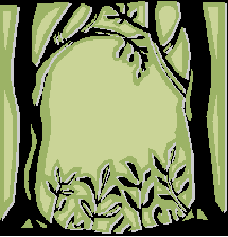




|
|
|
The results suggest that the majority of species
in a mixed dipterocarp forest have the potential for vegetative propagation
from cuttings. We cannot conclude whether the observed proportion of rooting
species (66%) is high or low compared to other tropical forests, because
no comparable studies have been conducted. However, the observed rooting
abilities are likely underestimates for most of the study species, because
the cuttings were collected from suppressed forest saplings, and successful
rooting from cuttings is affected by the age and the nutrient status of donor
trees (Kantarli, 1993). Generally, rooting decreases with the age of donor
trees ( Smits et al., 1990). Cuttings collected
from donors in vigorous growing conditions root more successfully than cuttings
from those growing in poor conditions (e.g., under low light), which generally
have lower C:N ratios ( Kantarli and Veierskov).
Most of the donor saplings in this study had been growing in shaded conditions
for at least 10 years (A. Itoh, personal observation). The study results,
therefore, should be considered to be a conservative estimate of the rooting
ability of these species. It is likely that more species would have rooted
successfully if we had taken cuttings from more vigorous donors. For example,
cuttings from Dryobalanops aromatica, Shorea parvifolia, and Shorea macroptera
did not root in our experiment, but were reported to produce roots when
collected from young healthy seedlings grown under nursery conditions (e.g.,
Aminah; Smits; Dick and Aminah). In addition, rooting percentage could be
improved in the species that successfully rooted during this experiment by
choosing more suitable donors. Therefore, vegetative propagation by cuttings
seems highly viable for many mixed dipterocarp forest species, especially
for those that have small mature sizes.
This study showed that the majority of species in a mixed dipterocarp forest in Sarawak have significant potential for vegetative propagation by cuttings. Small and fast growing species showed especially good rooting ability. Planting stock for these species can easily be produced from cuttings for restoration programs, even if seeds are unavailable. However, many upper canopy and emergent species, including dipterocarps, showed poor rooting ability, suggesting that seedling production from cuttings of these species may be difficult. Variations in rooting ability were related to both phylogenetic and ecological factors. Thus, knowledge of the ecological characteristics of species, especially sprouting ability, is useful for the preliminary selection of species for cutting propagation.
1. Picture from: http://www.dotzel.com/mfpc/
|
Home
|
Index
|
Preservation
|
|
Goals
|
Characterization |
Time plan |
|
FAQ's |
Monitoring |
Members |
|
Presentation |
Minutes |
Final Presentation
|